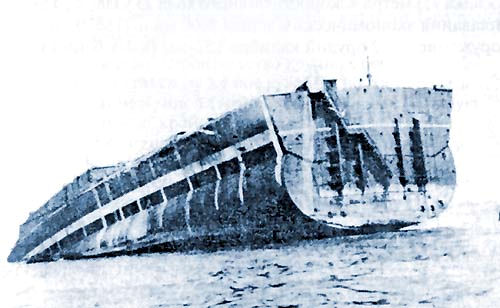Stalingrad
The Stalingrad-class battlecruiser, also known as Project 82 was a Soviet battlecruiser design from 1941. It was a smaller and less-expensive counterpart to the Kronshtadt-class battlecruisers of 1939. The original role was for a light, fast ship intended to break up attacks by British fast-cruiser forces that might attempt bombardment of Russia’s northern ports. In keeping with the battlecruiser design concept, they would have been able to outgun any ship with similar speed, or outrun anything more heavily armed. Design work had just started when the German invasion of the Soviet Union opened and the design was put on hold.
The design was reimagined in 1944, intended to operate along with the Sverdlov-class cruisers and proposed aircraft carriers to make up powerful task forces able to challenge the American fleet. In this role it would need to be a more powerful ship than the original design, taking over for the now-cancelled Kronstadts. They were intended to fend off enemy attacks and protect the carriers when bad weather prevented flying. A series of at least four were planned, and Stalingrad finally began construction in 1951.
Supported primarily by Joseph Stalin and opposed by a considerable part of the naval staff, the project came to an abrupt end with his death in 1953. By this time a second example was under construction and abandoned on the slipway, while a third was never started. The partially completed Stalingrad ended as a target ship for testing anti-ship missiles, before being broken up around 1962.
| General characteristics Project 82 design | |
|---|---|
| Type: | Battlecruiser |
| Displacement: | 36,500 metric tons (35,900 long tons) (standard)42,300 metric tons (41,600 long tons) (full load) |
| Length: | 273.6 m (897 ft 8 in) |
| Beam: | 32 m (105 ft 0 in) |
| Draught: | 9.2 m (30 ft 2 in) |
| Installed power: | 280,000 shp (208,796 kW) |
| Propulsion: | 4-shaft TV-4 geared steam turbines water-tube boilers |
| Speed: | 35.5 knots (65.7 km/h; 40.9 mph) |
| Endurance: | 5,000 nmi (9,300 km; 5,800 mi) at 18 knots (33 km/h; 21 mph) |
| Complement: | 1,712 |
| Sensors and processing systems: | Giuis-2 air-search radar Rif-A surface-search radar Iakor, Zalp, Fut-B fire-control radars Grot and Shtag-B range-finding radarsSoltnse-1P infrared detectors Gerkules sonar |
| Electronic warfare & decoys: | Korall and Machta jammers |
| Armament: | 3 × triple 305 mm (12.0 in) guns6 × twin 130 mm (5.1 in) guns6 × quadruple 45-millimeter (1.8 in) guns10 × quadruple 25-millimeter (0.98 in) guns |
| Armor: | Waterline belt: 180 mm (7.1 in)Upper deck: 50 mm (2.0 in) eachMiddle deck: 70 mm (2.8 in)Turrets: 240 mm (9.4 in)Barbettes: 235 mm (9.3 in)Secondary turrets: 25 mm (0.98 in)Conning tower: 250 mm (9.8 in)Bulkheads: 140–125 mm (5.5–4.9 in) |

